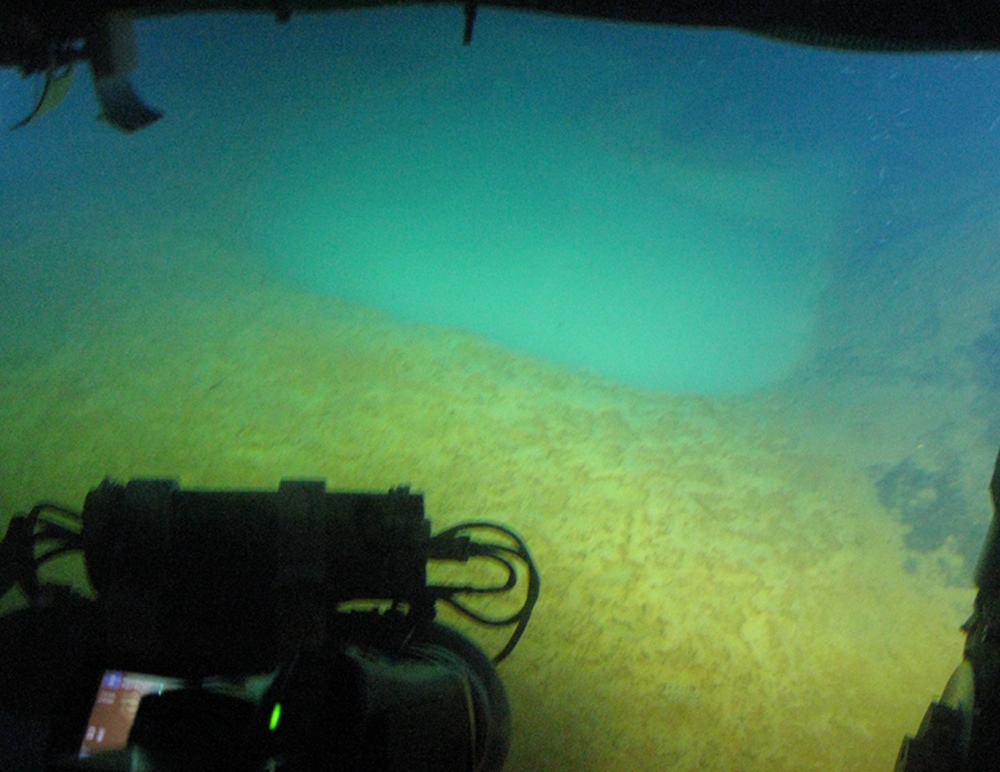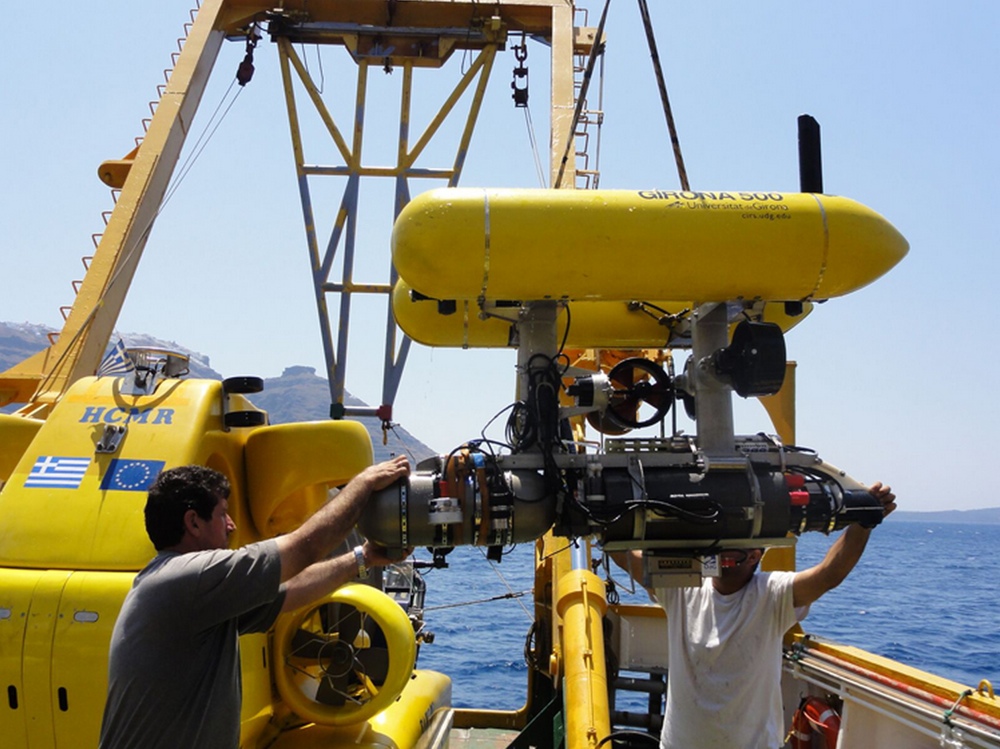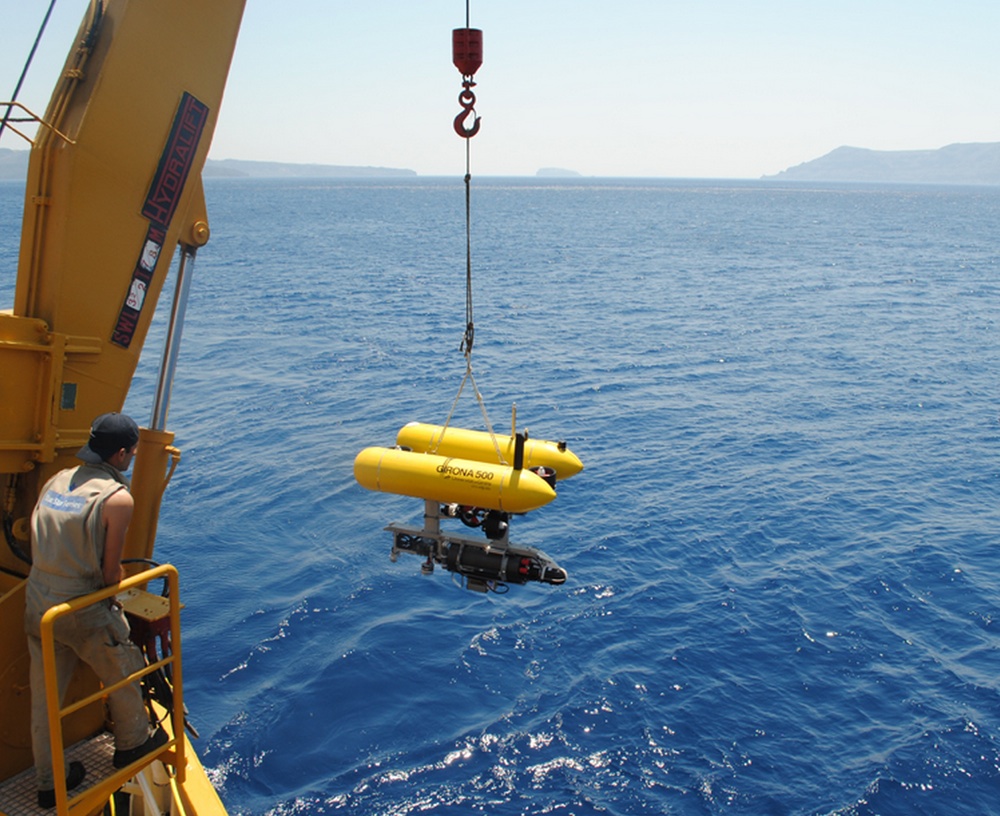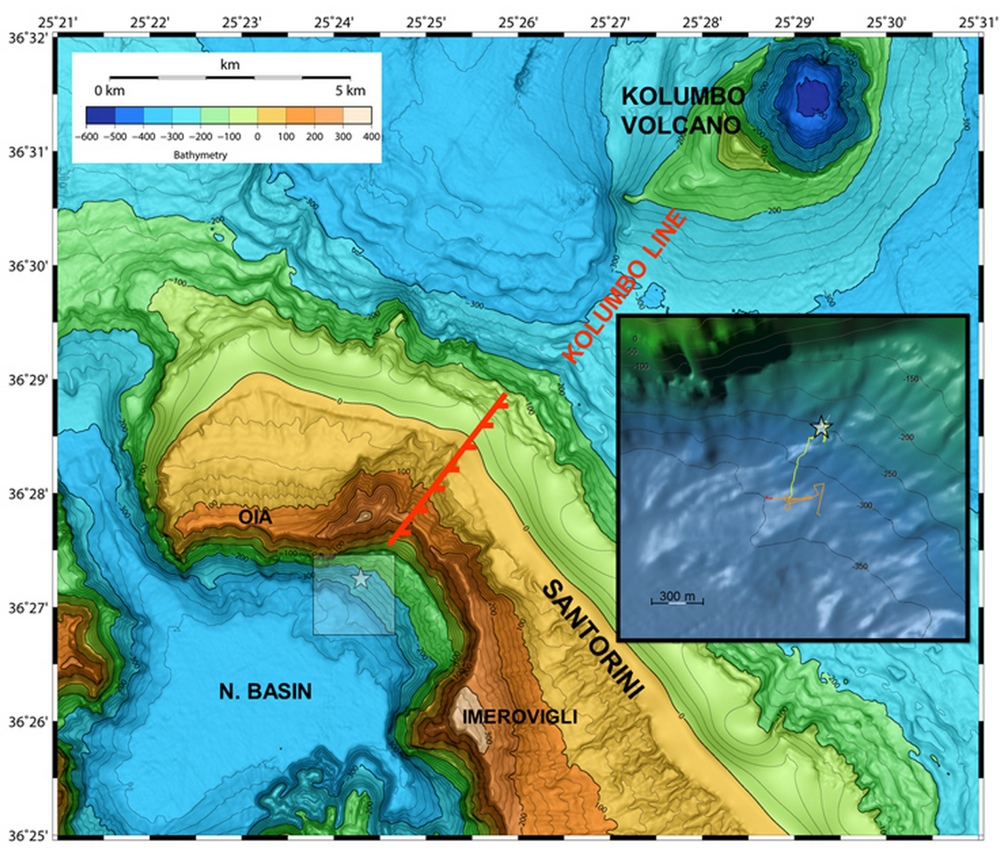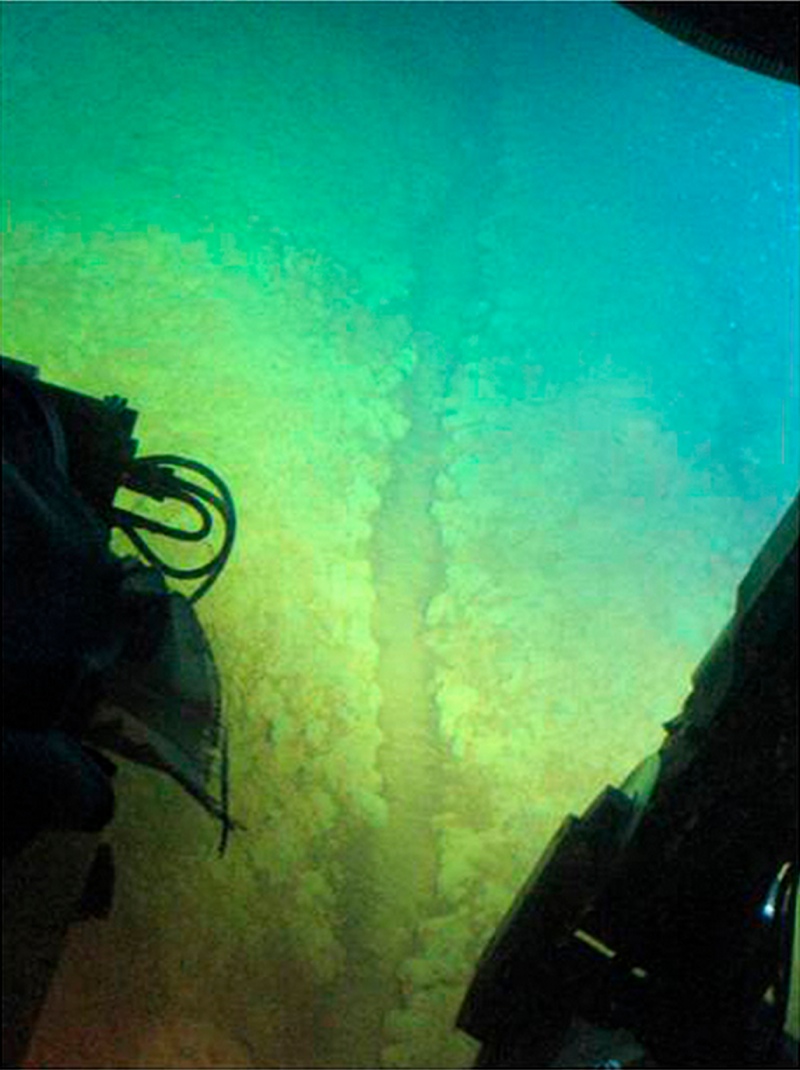In Photos: 'Most Beautiful Lakes' Discovered Beneath Aegean Sea
Scientists have discovered a series of meandering, interconnected pools chockfull of carbon dioxide deep in the Aegean Sea. These pools, which are an iridescent white color could shed light on questions about deep-sea storage of carbon and also provide a way to monitor for future eruptions of the Santorini volcano, whose crater holds the carbon pools. Here's a look at what the researchers found hidden beneath the sea. [Read full story on Aegean's hidden pools]
Beautiful lakes
Using underwater vehicles, the international team discovered the pools in the crater of the Santorini volcano, which erupted and wiped out the Minoan civilization along the Aegean Sea in 1600 B.C. Here a look at one of the pools, which have been named Kallisti Limnes — Greek for "most beautiful lakes." (Photo Credit: Rich Camilli, Woods Hole Oceanographic Institution)
High-tech dive
The crew from the R/V Aegaeo prepare Girona 500, an autonomous underwater vehicle (AUV) operated by the University of Girona. The team used the AUV, equipped with the TETHYS mass spectrometer (shown strapped to hull), to identify undersea layers of water that had unusual chemical properties. Santorini island can be seen in the background. (Photo Credit: David Ribas, University of Girona)
Deploying Girona 500
The crew deploys Girona 500 into the Aegean Sea to pinpoint odd chemical signatures in layers of water. The information revealed the carbon pools at depth. (Photo Credit: Paraskevi Nomikou, University of Athens)
Get the world’s most fascinating discoveries delivered straight to your inbox.
Sea tracks
The researchers discovered the Kallisti Limnes carbon pools (white star) in the Santorini volcano crater (shown: topographic relief map of the northern Santorini volcanic field). The onshore Kolumbo fault is indicated by a dashed red line, which along with the Kolumbo line, makes up part of the Christianna-Santorini-Kolumbo tectonic line.
The inset box shows a detailed view from the southwest of the caldera slope bathymetry around the study site. The track lines of the submersible vehicle can be seen in red, orange and yellow lines, which correspond to the first and second AUV dives, and the human-occupied vehicle (HOV) dive, respectively. (Illustration courtesy of Camilli, et al)
Water slide
Here, microbial iron mats with a flow channel running through them that cascades down a slope from a pool full of carbon dioxide at a depth of about 820 feet (250 meters).
Kallisti Limnes
At 770 feet (235 m) depth beneath the Aegean Sea, lie the meandering hydrothermal pools called the Kallisti Limnes about 3.3 to 6.6 feet (1 to 2 m) wide. "The characteristic meandering of these pools and flow channels suggest slow, persistent gravity-driven flow," the researchers write online July 16 in the journal Scientific Reports. (Photo Credit: Rich Camilli et al., Scientific Reports, doi:10.1038/srep12152)
Opal particles
The pools may get their distinctive color from the glassy microscopic bodies of silica-based organisms living there.
This scanning electron micrograph shows particles rich in silicon and iron from mats in the Aegean Sea. The shapes of these particles suggest they were created by microbes that use iron as an energy source. For instance, some of the structures resemble those of stalks from Gallionella ferruginea or Mariprofundus ferrooxydans, which oxidize iron for a living. (Photo Credit: Rich Camilli et al., Scientific Reports, doi:10.1038/srep12152)
Jeanna Bryner is managing editor of Scientific American. Previously she was editor in chief of Live Science and, prior to that, an editor at Scholastic's Science World magazine. Bryner has an English degree from Salisbury University, a master's degree in biogeochemistry and environmental sciences from the University of Maryland and a graduate science journalism degree from New York University. She has worked as a biologist in Florida, where she monitored wetlands and did field surveys for endangered species, including the gorgeous Florida Scrub Jay. She also received an ocean sciences journalism fellowship from the Woods Hole Oceanographic Institution. She is a firm believer that science is for everyone and that just about everything can be viewed through the lens of science.


